In addition to its national parks, Turkey has 35 areas that have been specifically preserved in order to protect endangered species of flora and fauna, and some are used for scientific research and educational studies. All the nature reserves in Turkey have been designated according to various biological characteristics.
Yumurtalik (Yumurtalık) Nature Reserve – Adana
Yumurtalik Nature Reserve is 35km northeast of the centre of Karatas, 30km southwest of Yumurtalik and southeast of Adana. The reserve can be reached from the Karatas-Adana Road, then turning off onto the Yumurtalik-Adana Road. By public transport, it is accessible from Adana and Osmaniye, both of which are well connected by bus to the rest of the country. Yumurtalik Nature Reserve covers an area of 16,430 hectares and is within the Seyhan-Ceyhan delta, which its lakes, lagoons and wide collection of plant and animal species. The area is an important location for many species of migrating birds, with the highest number during the winter when the lakes are a shelter at a time when other lakes further north freeze over. In addition to the wide variety of birds, Akyatan and Agyatan lakes are also important breeding areas for the caretta caretta and cheloria mydas sea turtles, both of which are endangered. It is one of 17 sea turtle nesting areas in the Turkish Mediterranean
Dandindere Nature Reserve – Afyon
Dandindere (Dandin River) Nature Reserve is 30km from Emirdag, northeast of Afyon, in the Aegean Region. Afyon is easily accessible by bus from all over the country, and the nature reserve is off the main highway to Elmadag. The park, covering an area of 260 hectares, is known for its groves of the rare Taurus Cedar tree (Cetrus libani) which normally grows in southern Turkey. The Dandin River, which forms the northern boundary of the cedars, has been made a nature reserve in order to carry out scientific research and educational projects, and to encourage the preservation of the area. There are also many different varieties of juniper. Foxes, wolves, badgers, pigs, rabbits, partridges and quails also inhabit the park.
Alacadag (Alacadağ) Nature Reserve – Antalya
Alacadag Nature Reserve is in Alacadag village 25km north of Finike, in the province of Antalya. The area can be reached by following the forest road, which is 12km from Finike on the road to Elmali. The 427-hectare park is best known as an arboretum containing over 20 species of trees, many of which are rare and extremely large and old. In addition, there is are clusters of Taurus cedar, red pine, katran juniper, oak gull, grey prinari (Quercus ilex), kermes oak, flowering ash, silver birch, nettle tree berry. In addition to the interesting collection of trees, there is also a large number of species of wildlife inhabiting the park, like foxes, rabbits, badgers, martens, pigs, jackals, hyenas, squirrels and wolves; bird species include partridge, chaffinch, hoopoe, jay, pigeon, goat sucker, woodpecker, field fare, black hen, and cormorant; reptiles found here include turtles, many types of snakes and lizards.
Dibek Nature Reserve – Antalya
The Park lies within the borders of Dibek and in the Kumluca area of Antalya. Within the 550-hectare park, there is a cedar grove containing many extremely old trees. The region has a forest ecosystem and has been made into a nature reserve in order to carry out scientific research and educational projects, and to encourage its preservation. Animals and birds inhabiting the area include mountain goats, deer, pigs, rabbits, partridges, woodcock, and snakes.
Ciglikara (Çiğlikara) Nature Reserve – Antalya
The Park is in the district of Elmali, west of Antalya. It lies between the villages of Kizilagac, Zumrutova and Tekkeli. Ciglikara can be reached by the Antalya-Finike-Elmali road, or Antakya-Korkuteeli-Elmali road. There is good public transport available to Antalya and Finike from other regions of Turkey. The area is the perfect natural habitat of the cedar tree (Cedrus Libani) and many types of juniper, poplar and silver birch, with a total of 32 species of trees growing in 11 hectares. The park covers nearly 16,000 hectares, with 400 species of plant including 116 growing in the region between 1050-2200m altitudes. Wild boars, hyenas, jackals, badgers, martens, foxes squirrels, moles and a small number of bears and lynxes also inhabit the area, plus a variety of birds and reptiles
Efeler Nature Reserve – Artvin
The Park is near Camili, near the Georgian border, and 50km northeast of Borcka, in the district of Artvin in the Eastern Black Sea province. The park is accessible via Borcka, and Artvin which is connected by a good bus service. The nearest airport is at Kars. The Camili-Efeler Forest is the most untouched forest ecosystem in Turkey and Europe. There are many species of trees including beech, fir, spruce, horn-beam, chestnut and alder, plus certain types of oak. The river basin in the area is on the migration route of birds of prey
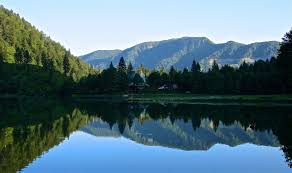 Gorgit Nature Reserve – Artvin
Gorgit Nature Reserve – Artvin
The Park is near Camili, near the Georgian border, and 50km from Borcka, in the district of Artvin in the Eastern Black Sea province. The park is accessible via Borcka, and Artvin, which is connected by a good bus service. The nearest airport is at Kars. The Camili-Gorgit forest has many very old and huge trees, including species of fir, spruce, beech, horn-beam and alder. The river basin in the area is on the migration route of many species of birds of prey
Camburnu (Çamburnu) Nature Reserve – Artvin
The Park is near Camburny, between Camlikoy and Hopa northwest of Artvin in the Eastern Black Sea. The park can be reached via the Trabzon-Hopa state highway. The main characteristic of this 180-hectare park is the Scotch pine, which normally grows only at an altitude of between 1300 – 2700m, but here is near sea level. The area is also the first point at which migrating birds arrive when coming from the north over the Black Sea, to the mountain range of it.
Gurgen (Gürgen) Mountain Nature Reserve – Balikesir
The Park is between Zeytinli and Ortaoba, 124km from Balikesir and 35km from Edremit. Edremit is a good transport hub and is well connected to the rest of the country. The nearest airport is at Balikesir. The area is especially noted for the rare and endangered Ida Mountain fir tree, and the rich wildlife in the unique forest ecosystem. In addition to the fir, the 240 hectares also has larch and eastern beech trees, and the animals living here include deer, roe deer, pigs, bears, wolves and jackals.The Eastern Black Sea. The area has the status of nature reserve in order to protect these features.
Hazelnut Nature Reserve – Bolu
The area is 35km north of Bolu, in the western Black Sea region. The park can be reached via the Bolu-Yigica highway. Bolu is between Istanbul and Ankara, and is well connected by public transport. The area of 460 hectares has a unique ecosystem in which the endangered Bolu hazelnut tree flourishes. It grows naturally only in Turkey, and is noted for its height (25-30m) and broad trunk around 1m in diameter. In the area there are many other species of trees includiing the Uludag fir, Scotch pine, larch, beech, poplar, alder, plane and lime. There are also rare species of deer, plus bears, wolves, foxes, pigs, rabbits, trout and carp.
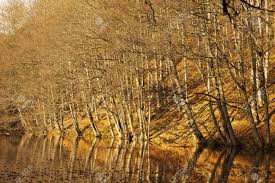 Akdogan (Akdoğan) Nature Reserve -Bolu
Akdogan (Akdoğan) Nature Reserve -Bolu
The nature reserve is near the village of Yeniguney, in the central district of Bolu in the Western Black Sea region. Yeniguney village lies 2.5km off the E5 Ankara-Istanbul highway. This is the only place in the world, where the endangered Midwife pine tree grows and spreads naturally. In addition to this rare species, others include the larch and oak trees. The forest is also home to pigs, foxes, weasels, rabbits, squirrels, hedgehogs, partridges, stock-doves, turtle doves, cuckoos, owls, bee-eaters, woodpeckers and goldfinches. .
Kokez (Kökez) Nature Reserve – Bolu
The Park is near Atacak, in the district of Bolu in the Western Black Sea province. It is accessible via the Bolu-Seben state highway, then taking the forest road after 18km from Bolu. The 324 hectares have a very untouched and rare forest ecosystem, with exceptionally tall and old Uludag fir trees, plus beech and horn-beam trees. The forest also contains wild cherry, hazelnut and strawberries, and is a home to deer, pigs, bears, wolves, foxes and rabbits
Suluklugol (Sülüklügöl) Nature Reserve – Bolu
The forest is in the region of Mudurnu, near the villages of Akyol and Kuskavagi, south of Bolu in the Western Black Sea region. It can be reached via the Bolu-Abant Taskesti road. Suluklu Gol (Lake) has a unique forest ecosystem, caused by the tectonic movements of the earth which has created a very damp environment. Species of trees found here are larch, Scotch pine, fir, beech, oak, popular, horn-beam, lime, cherry and silver birch. The forest is also home to the roe deer, wild boar, bear, wolf, fox, rabbit, sparrow hawk, and tree frog
Sutçuler Sigla (Sütçüler Sığla) Forest Nature Reserve – Burdur
The forest is in the Kizilli district of Bucak, in the province of Burdur, which is 50km west of Isparta. The area is 59km from Sutculer. Both Isparta and Burdur are well connected to other regions of the country by bus. The most prized species in the forest is the Sigla tree, and the area is under protection in order to preserve it for scientific research and educational projects. In addition to this rare species, there are also cluster pine, oak, alder and plane trees. Animals inhabiting the area include squirrels, reptiles and crabs
Kartal Lake Nature Reserve – Denizli
Kartal Golu (Eagle Lake) is in the Beyagac district of Denizli. The lake can be accessed by following the forest road from Beyagac, which is 40km long. Ulugöl Tepe (Ulugöl Peak) is one of the highest points of Sandiras Mountain (2261 m). Starting from here is a glacier valley 1.5km long, between 500 – 700m wide, and known as Kartal Gölü Buzul Vadisi (Eagle Lake Glacier Valley). This 1309 hectare nature reserve is known for its rare forest ecosystem, with black pine groves and huge trees aged between 250 and 700 years old. Around the lake there is an Alpine plant cover which is rich in species like black chicory, gazelle horn with yellow flowers, roses and clover, and there are a few species of fish in the lake.
Demircionu (Demirciönü) Nature Reserve – Düzce
The nature reserve is in the Akcakoca district of Duzce, in the Black Sea region. Duzce is around 60km west of Bolu. It can be accessed via Akcakoca, which is 10km away. There are groves of beech, horn-beam, chestnut, oak, lime, strawberries, blackberries and wild hazelnut in the forest area. It has a unique ecosystem that is very rich in flora and fauna, and wildlife inhabiting the park includes bears, wild boars, foxes, rabbits, wolves, jackals, deer, partridge, eagles, crows and sparrow hawks.
Gala Lake Nature Reserve – Edirne
The Lake is 10km away from district of Enez, which is in the far southwest corner of Thrace, and near the villages of Karpuzlu and Koyun. The lake can be reached via the Eceabat-Kesan-Enez highway. The nature reserve covers an area of 2369 hectares, and houses 111 species of birds, many of which are extremely rare and under threat of extinction. The area was specifically set up to protect the wildlife, increase the awareness of conservation and also enable scientific research to take place. The ecosystem of the lake, its salinity, plankton and temperature changes, are also of great scientific interest.
Habibi Neccar Mountain Nature Reserve – Hatay
The mountain is 10km away from Antakya (Hatay) in the southernmost point of Turkey, on the Syrian border, in the Eastern Mediterranean region. Antakya is easily accessible by public transport. The nature reserve around the mountain is famous for its cultural as well as natural value, especially for St Pierre Church, which was carved into the rocks. After the death of Christ, St Pierre came to Antakya in 29 AD to preach. The Charon monument, 200m north of the church, is huge sculpture of Haron, known as Boatman of Hell in mythology, carved into the rocks. The main species of tree are cluster pine, oaks and sandalwood. The mountain is also home to foxes, rabbits, partridges and stock doves
Tekkoz Kengerliduz (Tekkoz Kengerlidüz) Nature Reserve – Hatay
Tekkoz Kengerliduz is 30km from Dortyol and southeast of Osmaniye, in the province of Antakya (Hatay), near the villages of Kullu and Kizlarcayi. The area can be reached via the old E5 highway, then turning off after 15km. The area’s ecosystem is different from the Mediterranean. The main species of trees around Kengerliduz are beech, oak and fir, and around Tekkoz are hornbeam, ash, beach, black pine and silver birch. The main animal species in the area are wild goat, roe deer, bear, hyena, wild cat, wagtail, wolf, jackal and fox.
Kasnak Oak (Kasnak Meşesi) Forest Nature Reserve – Isparta
The forest is near Yukari Gokdere village, in Isparta province. It is within the area known as Goller Bolgesi (Lake District). The forest can be reached by the Isparta-Egridir state highway. The area of 1300 hectares is best known for its endangered species of trees, which grow only in Turkey. Groves of cedar and juniper are the main species of the area. The forest is also a home to foxes, badgers, wolves, wild boar and squirrel.
Goknarlik (Göknarlık) Nature Reserve – Istanbul
The Park is 2km outside Tokat, a small village in the Beykoz district of Istanbul, northeast of the city. There is public transport available from Istanbul. The area has a unique ecosystem which is in danger of vanishing, and has the only fir tree grove growing naturally in Istanbul. Other tree species include chestnut, lime, horn-beam and hazelnut.
Sultansazligi (Sultansazlığı) Nature Reserve – Kayseri
The area is between Yesilhisar and Yahyali in the province of Kayseri, and consists of four different locations: Yay Lake (3650 hectares), Kebir Sazligi (1900 hectares), (Sultansazligi (3300 hectares) and Otluk Alan (8350 hectares). The area is accessible via the 15km road off the Kayseri-Nigde highway. There are 301 different species of the birds in the entire area, and is one of the most important incubation fields in Turkey with 85 species breeding here. The ecosystem is rare in that the salt and fresh waters co-exist, and it is the only place in Europe where crane, flamingo, heron and pelican are incubating together. The area is renowned as a shelter for many birds in danger of extinction, and many more migrate here in the winter. Species of animals and fish include water rat, bat, fox, rabbit, carp, water snake, lizard, turtle and frog.
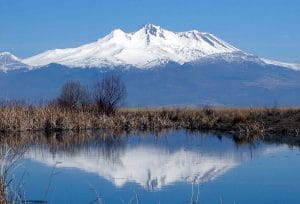
Kasatura Gulf Nature Reserve – Kirklareli
The gulf is in Kiyikoy, in the Vize district of the province of Kirklareli in northern Thrace. It can be reached via the Istanbul-Kirklareli state highway, and turning off at Vize. The forest is 48km from Vize. The forest contains the only black pine grove in the Thrace Region, and is a unique forest ecosystem with many animal and plant species. The main types of trees are black pine, oak, eastern horn-beam, black horn-beam, ash, beech, silver birch, lime and alder. The main types of animals are roe deer, wild roar, wolf, jackal, marten, fox, badger, and rabbit.
Saka Lake Nature Reserve – Kirklareli
The reserve is in the village of Sivriler, near Demirköy in northern Thrace. The area is 26km from Demirkoy. There is public transport available from Kirklareli. The 1343-hectare forest contains species of plants that are under threat of extinction, plus rare and unique wildlife in a complete ecosystem. The main species of tree include alder, elm and ash, and there are also areas of oak, horn-beam, beech, black poplar, white poplar, willow, lime, and walnut. The wide range of wildlife living in the forest include deer, roe deer, fox, wolf, rabbit, wild roar, wild cat, swan, duck, woodcock, plank bird, viper, blind snake, water snake, carp fish, coral fish, sea bass, and craw fish
Seyfe Lake Nature Reserve – Kirsehir
The Lake is 30km northeast of Kirsehir, which is in between Ankara and Cappadocia, and just off the highway between Mucur and Karahasanli, in Central Anatolia. The lake is easily accessible from Kirsehir, which is well connected by public transport. The lake is a habitat to the bustard and shelduck, two birds under threat of extinction, as well as a significant breeding are for flamingos. There are 167 different species of water birds, with a total population of around half a million which also include grey heron, crested grebe, pheasant, pintail duck, white neck plover and crane.
Akgol (Akgöl) Nature Reserve – Konya
The Lake lies in the Eregli district of Konya, in Central Anatolia. Akgol Lake and its surroundings are the home to a vast quantity and variety of water birds. Some are in danger of extinction, which means that this natural protection area, with an area of 6787 hectares, is of great national and international importance. Over 200 species of birds have been seen living in and around the Eregli reed beds, and amongst those are flamingos, titmouse, cormorant, many types of heron, swan, goose, duck, Egyptian vulture, snake eagle, reed hen harrier, crane, dove, eagle owl and great falcon. During the winter migration season, little marsh, peaked marsh, great white heron, white-fronted goose, hairy duck and crane are very common.
Kasalic (Kasaliç) Nature Reserve – Kutahya
The Park is in the village of Durubey village, in the province of Kutahya in Central Anatolia. The park can be accessed via the forest road 5km after Domanic, towards Inegol. The area bears the characteristics of a Black Sea forest ecosystem, even though it lies in Anatolia. Beech and black pine forests grow naturally in the area, and other dominant species include oak, poplar, wild pear, blackberry, coltsfoot, meadow saffron, foxglove and wild strawberry. The forest is also home to bears, wild boars, deer, foxes, rabbits and hedgehogs.
Vakif Çamligi Nature Reserve – Kutahya
The Vakif Camligi is in the village of Vakif, near Tavsanli in the district of Kutahya. The grove is accessed via the 12km road off the Kutahya-Tavsanli highway. This pine grove is the only area in the world where the Ehrami black pine, Pinus nigra ssp. pallasiana var. pallasiana, a rare and endangered tree, grows naturally. Alongside this is the ebe pine, Pinus nigra, which only grows in Turkey, and the combination of the two growing together makes it a unique ecosystem. In addition, other species include juniper, oak, popular, willow and lime. Wildlife in the area includes fox, badger, pig, rabbit, partridge and quail.
Sirtlandagi (Sırtlandağı) Nature Reserve – Mugla
The area is in the village of Meselik, near Milas, in the Mugla province. The area is 23km away from Milas and 25km from Bodrum. It is easily accessible from both towns. The most distinctive feature of this area, which covers an area of 760 hectares, is the halep pine
Pinus halepensis which is a rare species in Turkey. Other species include cluster pine, mastic, oak, wild olive, laurel, spruce and mountain strawberry. Animals inhabiting the area include fox, jackal, wild boar, rabbit, hedgehog, partridge, water hen, and black hen.
Haciosman (Hacıosman) Nature Reserve – Samsun
The forest is in Cinarli, in the Carsamba district of Samsun in the Central Black Sea region, lying 8km east of Samsun. The forest can be reached via the Samsun-Carsamba state highway. The forest ecosystem here is a rare one, and the most common species are ash, oak, walnut and silver birch. Because of the nourishment qualities of the area, there are also many species of animals inhabiting the forest, which include mole, turtle and grey heron. In order to protect and preserve the area, the 86 hectares were given official natural protection in 1987.
Sarikum (Sarıkum) Nature Reserve – Sinop
The area is in Abali village, near merkez in the province of Sinop, in the western Black Sea region. The area can be accessed off the Sinop-Istanbul state highway, 17km west of Sinop. The 78 hectares of the area are situated in a combination of sea, sand, lake and forest. There are many species of water birds and birds of prey, and animals like roe deer, lynx, bustard and swan. There is a dense presence of the wild colt plant, and species of trees also include beech, horn-beam and oak, a rare combination, plus a pure ash forest.
Citdere (Çitdere) Nature Reserve – Zonguldak
The area is in Sekermese, in the Yenice area of Zonguldak, in the western Black Sea region. The area can be reached via the Zonguldak-Ankara state highway, then turning off at Yenice for 45km. The area has a unique ecosystem containing many species of forest trees, like the rare instance oak. There are also beech, horn-bean, fir, ash, silver birch, black pine, Scotch pine, lime, dog rose, and alder. Some of the wild animals living in the area are under threat of extinction, like wild cat, deer, bear, pig, wolf, fox and lynx. .
Kavakli (Kavaklı) Nature Reserve – Zonguldak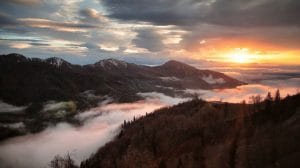
The area is in the village of Bolkus, in the Yenice district of Zonguldak in the western Black Sea region. The area is accessible via the Zonguldak-Ankara state highway, then turning off at Sapanca for 41 km. The 334 hectares contain a rare ecosystem, which includes many varieties of plant life, including hazelnut trees, huge ash trees, lime silver birch and fir. The animals inhabiting the area include deer, bear, fox, pig, fox, white crow, chaffinch and many birds of prey.
Alternatively, to discover the best of Dalyan – koycegiz protected area, you can visit Dalyan Volkan’s Adventures website and join in one of our trips.

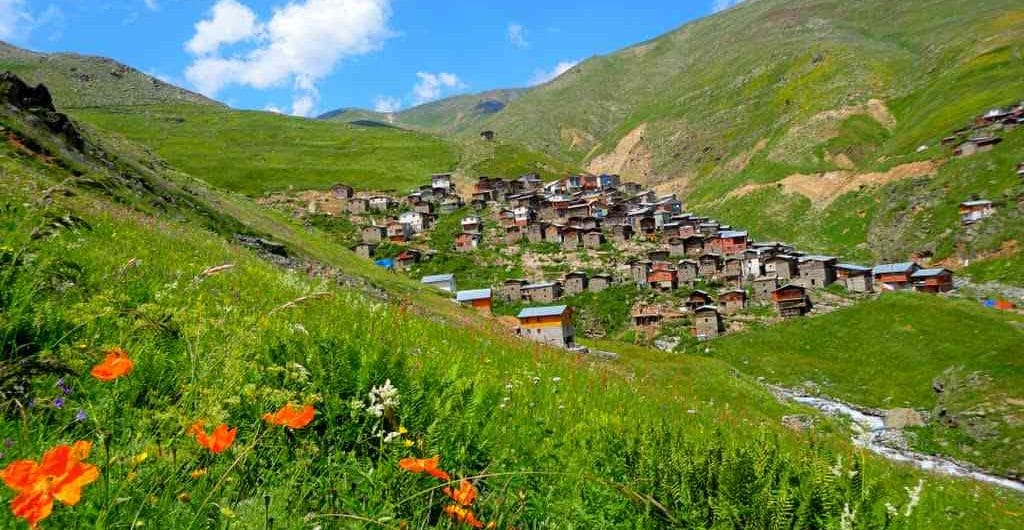
Comments